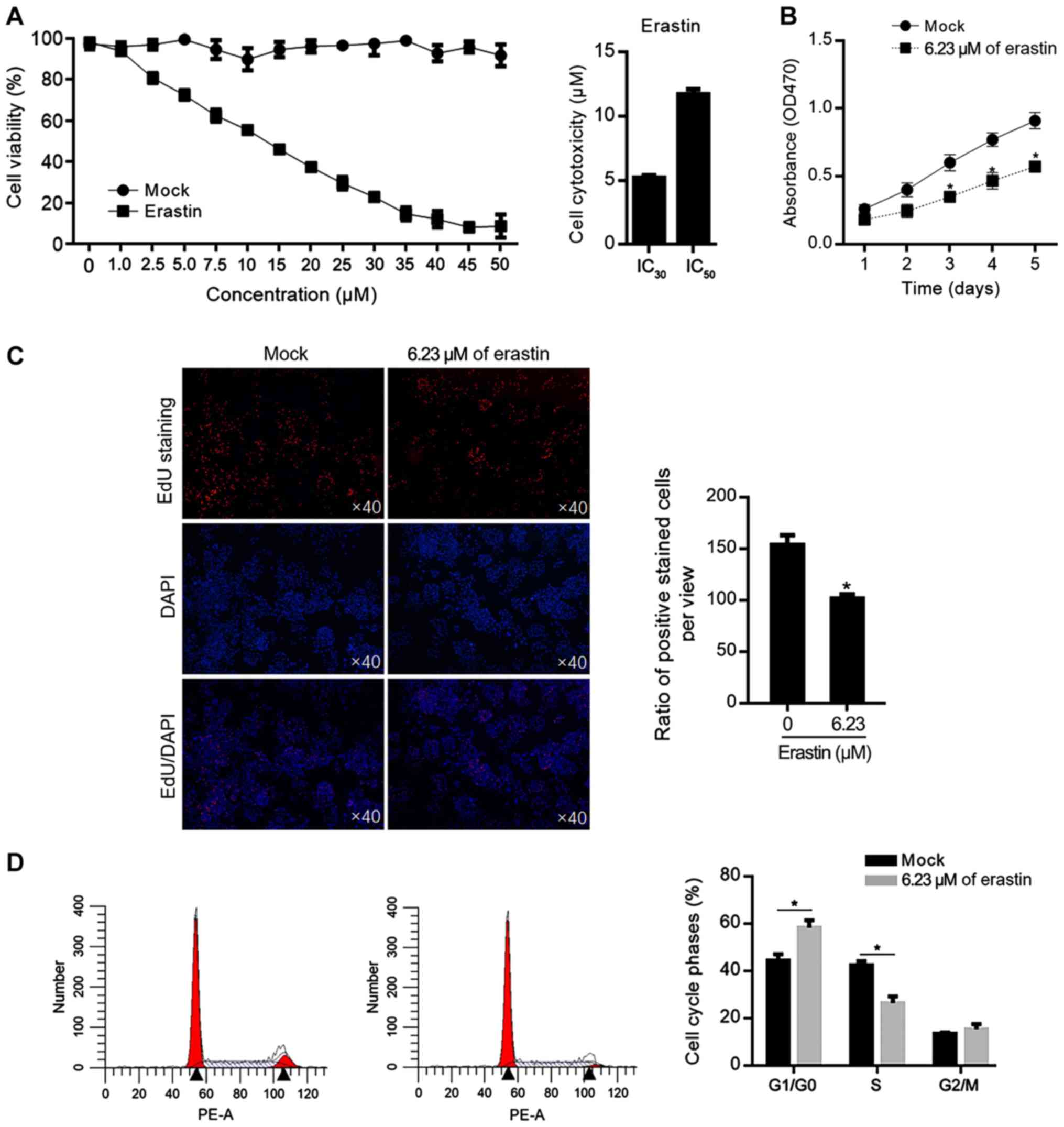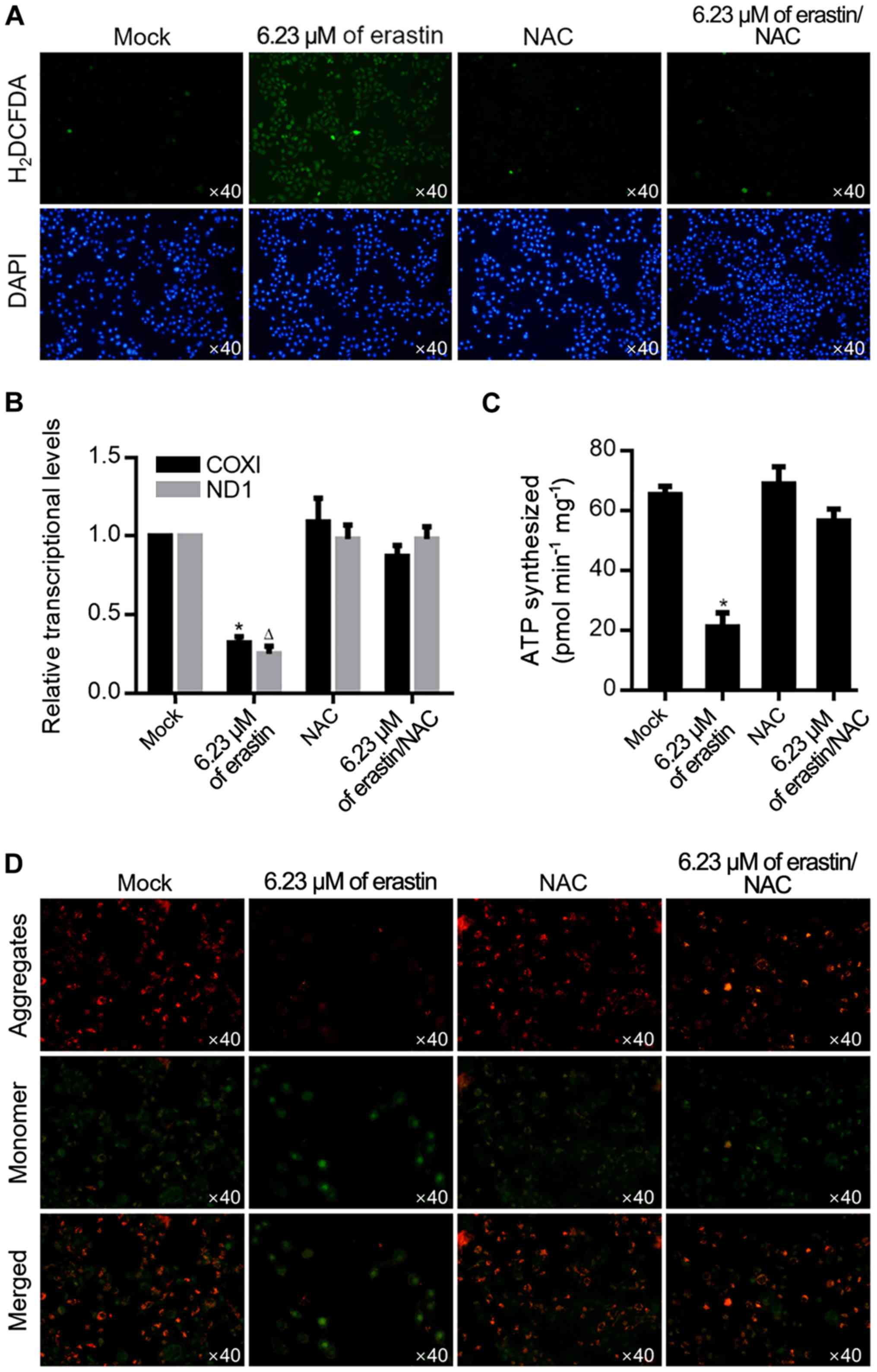Erastin induces apoptotic and ferroptotic cell death by inducing ROS accumulation by causing mitochondrial dysfunction in gastric cancer cell HGC‑27
- Authors:
- Published online on: July 28, 2020 https://doi.org/10.3892/mmr.2020.11376
- Pages: 2826-2832
-
Copyright: © Sun et al. This is an open access article distributed under the terms of Creative Commons Attribution License.
Metrics:
Total
Views: 0 (Spandidos Publications: | PMC Statistics:
)
Total PDF Downloads: 0 (Spandidos Publications: | PMC Statistics:
)
Abstract
Erastin, a classical inducer of non‑apoptotic cell death, exerts cytotoxicity in several types of cancer cells, including gastric cancer cells, by depleting glutathione, which is a primary cellular antioxidant, thus causing reactive oxygen species (ROS) accumulation. Although numerous studies have focused on the non‑apoptotic cell death induced by erastin, whether erastin induces apoptosis remains unknown. The present study confirmed the cytotoxicity of erastin in HGC‑27 cells and used a 30% inhibitory concentration (IC30, approximately 6.23 µM) for further analysis. The cell cycle analysis revealed that 6.23 µM of erastin inhibited proliferation by blocking the cell cycle at the G1/G0 phase. Further analysis also showed that 6.23 µM of erastin clearly inhibited HGC‑27 malignant behaviors, including migration, invasion, colony formation and tumor formation in soft agar. The observation of ROS accumulation due to erastin treatment led to determination of the effects of erastin on mitochondrial function and, as expected, erastin treatment decreased transcriptional activity and ATP production in mitochondria and disrupted the mitochondrial potential; these effects were reversed by the addition of the ROS scavenger NAC. To evaluate the effect of erastin in inducing apoptosis, HGC‑27 cells were treated with 6.23 µM of erastin for 7 days and then analyzed. Evident apoptotic cell death was induced by erastin and this apoptosis was reversed by the addition of an apoptosis inhibitor (zVAD) or NAC but not by the addition of a ferroptosis inhibitor (ferrostatin‑1). Furthermore, the detection of caspase‑3 and poly (adenosine diphosphate‑ribose) polymerase (PARP) also confirmed that treatment with erastin promoted the cleavage of caspase‑3 and PARP, which are hallmarks of apoptosis. Taken together, the present study revealed that a low dose of erastin inhibited malignant behavior and induced apoptosis by causing mitochondrial dysfunction.















